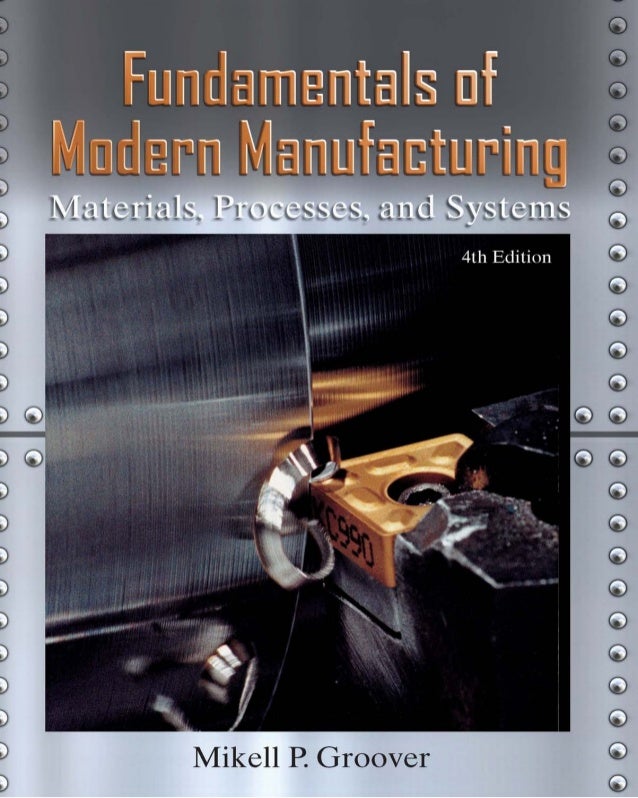File Size: 3.36 mb
Description
Written by seasoned experts in the field, this reference explores efficient methods of design, structural analysis, and algorithm formulation to: reduce waste, noise, and breakage in system function; identify faults in system construction; and achieve optimal machine tool performance. The authors investigate issues such as force, noise, vibration, and acoustic emission to predict the durability and strength of major system components. They evaluate noise levels for different types of machine tools, the effect of abrasion, fissure, and chemical diffusion on acoustic emission signals, the role of neural networks in machine tool diagnostics, and the Kurtosis method in virtual instrumentation.Content:-
Preface
1. General Notions About the Introduction of Technical Diagnosis for Machine Tools1.1 Introduction: The Place and the Role of Diagnosis in Modern Technical Systems
1.2 Monitoring, the First Step in Establishing the Technical Diagnostic
1.3 Application of Vibroacoustic Diagnosis to Machine Tools
1.4 Virtual Instrumentation for Establishing Technical Diagnosis
2. The State of the Art of Research Concerning Vibroacoustic Diagnosis of Machine Tools
2.1 Diagnosis of Rolling Bearings
2.2 Diagnosis of Slipping Bearings
2.3 Diagnosis of Gear Wheel Transmissions
2.4 Diagnosis of Belt Transmissions
2.5 Diagnosis of Driving Electrical Motors
2.6 Diagnosis of Some Deviations of the Rotational Parts
2.7 Diagnosis of the Tool and Cutting Process
2.8 Technical Diagnosis in Flexible Processing Systems
2.9 Conclusions: Theoretical and Experimental Research Perspectives
3. Systemization and Application of a Vibroacoustic Methods Package to Establish Machine Tool Technical Diagnostics
3.1 Theoretical Methods to Establish
3.2 Experimental Methods to Establish Technical Diagnostics
3.3 Recommendations Concerning the Use of Diagnosis Methods for Machine Tools
4. Theoretical and Experimental Research: Diagnostic Analysis of the Feed Kinematic Chain Mechanical System
4.1 Introduction to Mechanical Systems Analysis
4.2 The Experimental Stand
4.3 Theoretical Analysis of the Kinematic Feed Chain Mechanical System
4.4 Experimental Analysis of Kinematic Feed Chain Mechanical System
4.5 Conclusions and Implications of Diagnostic Analysis in Future Research
5. Designing and Manufacturing a Virtual Instrument Vibroacoustic Method Diagnostic Package
5.1 Virtual Instrumentation: Lab VIEW Graphical Programming Environment
5.2 Structure of LabVIEW Virtual Instrument
5.3 Virtual Instrumentation for Surface Diagnosis
5.4 Virtual Instrumentation for Profoundness Diagnosis
6. Theoretical and Experimental Research: Diagnosis of Some Feed Kinematic Chain Structure Elements
6.1 Vibration and Noise Sources During Feed Kinematic Chain Operation
6.2 Calculus of the Characteristic Frequencies of Bearings
6.3 Calculus of Frequencies that Characterize the Ball Screw-Nut Mechanism
6.4 Calculus of Characteristic Frequencies for the Tankette with Rolls
6.5 Preliminary Experimental Research
6.6 Experimental Research in Virtual Instrumentation
7. A Neural Approach to Establishing Technical Diagnosis for Machine Tools
7.1 Introduction to Neural Network Theory
7.2 Utilization of Neural Networks in Machine Tool Diagnostics
7.3 Final Remarks and Prospects for Utilizing Neural Networks for Machine Tool Diagnosis
8. Final Conclusions and Original Contributions
8.1 General Aspects and Conclusions— Recommendations
8.2 Original Contributions
Appendix 1. Surface Diagnosis Through Virtual Instrumentation
Appendix 2. Profoundness Diagnosis Through Virtual Instrumentation
Appendix 3. General Notions Regarding the Diagnosis of the Functioning State of Machine Tools
References
Author Details
" Ioan D. Marinescu"
The University of Toledo
Toledo, Ohio
The University of Toledo
Toledo, Ohio
"Constantin Ispas"
"Dan Boboc"
Politehnica University of Bucharest
Bucharest, Romania
Politehnica University of Bucharest
Bucharest, Romania
You May Also Like:-






No comments:
Post a Comment